#john ostrom
Note
whats deinonychus day, i mean sure its in the name but by whos authority? deinonychus is easily my favorite dinosaur so its quite exciting to me.
Excellent question! Deinonychus Day, held annually on February 25th, celebrates the anniversary of palaeontologist John Ostrom officially naming and describing Deinonychus. His work on the genus changed not only how we saw it and other dromaeosaurs, but revolutionised how we look at dinosaurs as a whole!
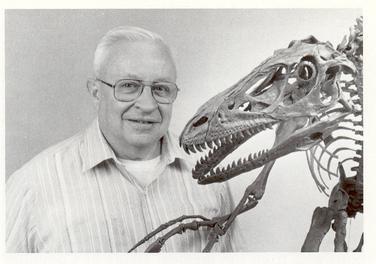
[ photo source ]
If you're interested in learning more, author Jason R. Abdale has documented the whole story in his wonderful article "Deinonychus: The Dinosaur that Changed the World."
90 notes
·
View notes
Photo




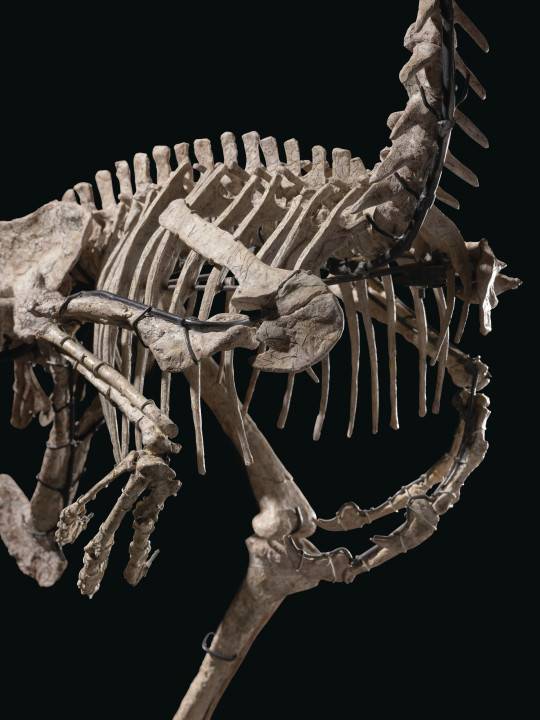
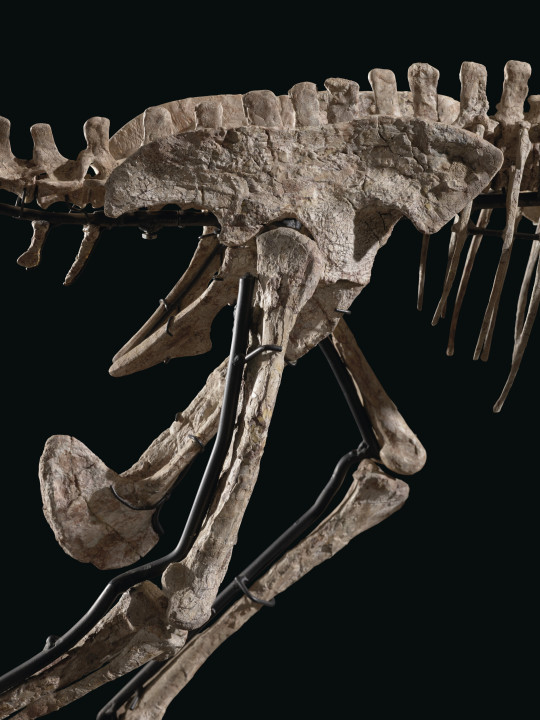

“Hector” (Deinonychus Antirrhopus), Montana, Usa,
From the Cloverly Formation, Wolf Canyon, Carbon County, Montana, the Early Cretaceous (circa 115-108 million years ago).
Excavated at Wolf Canyon, Carbon County, Montana (in the W1/2NE1/4 of Section 23, Township 4 South, Range 24 East, P.M.M.) 2013-4
Pangea Fossils February 2015.
Fifty million years before the reign of the dinosaurs ended in the age of Tyrannosaurus rex, a smaller, more agile, pack-hunting predator was the most feared animal of its time. The sleek, dynamic, and deadly Deinonychus is one of the most popular and well-known dinosaur species, but also one of the rarest fossils. Its popularity would peak following its leading appearance alongside T. rex as the Raptor in Jurassic Park. Taking his name from the greatest of the Trojan warriors, ‘Hector’ is the most complete skeleton of his species ever found.
Known for its long talon-like claws and elegant frame, Deinonychus flourished in western North America during the Early Cretaceous period. Part of the clade of dinosaurs called theropods (carnivorous animals that can walk on two legs), these sickle-clawed predators were armed with a deadly kick. Their fossil remains are typically found in the Cloverly Formation and the Antlers Formation, which are thought to have provided an environment of tropical and sub-tropical forests, lagoons, swamps, and river deltas for Deinonychus to inhabit.
The name Deinonychus was coined by palaeontologist, John Ostrom, in 1969 and translates to “terrible claw,” in reference to the killing claw on each foot. Shaped like a sickle and held up off the ground when not in use so as to maintain its lethal sharpness, this claw was used to disembowel its prey. It is believed that in order to use the claw with the highest degree of success, Deinonychus would have stood on one leg, holding the target with its long arms, and impaled its prey with a powerful kick. This attack was aided by the ability to use its arms, unlike many other dinosaurs, and the ability to stretch its hand to nine inches long. Indeed, it is believed that the main use of the arms was for this very purpose, and it is unlikely that the arms were ever used to walk on. Its deft movement and predatory skill were further supported by Deinonychus’ ability to stand on its hind legs when attacking other dinosaurs. This upright, offensive stance was facilitated by its long tail that provided essential balance thanks to rows of internal bundles of bony rods that gave the tail additional strength. The tail would otherwise be stretched horizontally when running, and contributed to the exceptional length of this animal, measuring approximately 3 meters long.
119 2⁄3 x 62 1⁄4 x 26in. (304 x 158 x 66cm.)
Courtesy of Christie’s
#art#sculpture#skeleton#deinonychus#archeology#montana#usa#style#history#monster#animal#christie's#hector#dinosaur#cretaceous period#cretaceous#carbon county#john ostrom#claw
141 notes
·
View notes
Text
Dinofact #15
Originally, the species Utahraptor ostrommaysi was originally intended to be named U. speilbergi after movie director Steven Spielberg, in exchange for financial contributions to paleontology. However, no agreement could be made on how much he should contribute, so Utahraptor was named after John Ostrom and Chris Mays for their contributions in paleontology.
Source: wikipedia
#dinosaurs#dinosaur#paleontology#utahraptor#utahraptor ostrommaysi#steven spielberg#john ostrom#chris mays#fun facts#trivia#dinosaur trivia#dinosaur fun facts#30th#august#2022#august 30th#august 2022#august 30th 2022
4 notes
·
View notes
Text
My first time playing Jurassic World Aftermath on my Oculus Quest 3.
#MattOstrom #VR #experience #JurassicWorld #JohnOstrom #Dienonychus #oculusquest3
0 notes
Text
Uncle Sam paid to develop a cancer drug and now one guy will get to charge whatever he wants for it

Today (Oct 19), I'm in Charleston, WV to give the 41st annual McCreight Lecture in the Humanities. Tomorrow (Oct 20), I'm at Charleston's Taylor Books from 12h-14h.

The argument for pharma patents: making new medicines is expensive, and medicines are how we save ourselves from cancer and other diseases. Therefore, we will award government-backed monopolies – patents – to pharma companies so they will have an incentive to invest their shareholders' capital in research.
There's plenty wrong with this argument. For one thing, pharma companies use their monopoly winnings to sell drugs, not invent drugs. For every dollar pharma spends on research, it spends three dollars on marketing:
https://www.bu.edu/sph/files/2015/05/Pharmaceutical-Marketing-and-Research-Spending-APHA-21-Oct-01.pdf
And that "R&D" isn't what you're thinking of, either. Most R&D spending goes to "evergreening" – coming up with minor variations on existing drugs in a bid to extend those patents for years or decades:
https://www.ncbi.nlm.nih.gov/pmc/articles/PMC3680578/
Evergreening got a lot of attention recently when John Green rained down righteous fire upon Johnson & Johnson for their sneaky tricks to prevent poor people from accessing affordable TB meds, prompting this excellent explainer from the Arm and A Leg Podcast:
https://armandalegshow.com/episode/john-green-part-1/
Another thing those monopoly profits are useful for: "pay for delay," where pharma companies bribe generic manufacturers not to make cheap versions of drugs whose patents have expired. Sure, it's illegal, but that doesn't stop 'em:
https://www.ftc.gov/news-events/topics/competition-enforcement/pay-delay
But it's their money, right? If they want to spend it on bribes or evergreening or marketing, at least some of that money is going into drugs that'll keep you and the people you love from enduring unimaginable pain or dying slowly and hard. Surely that warrants a patent.
Let's say it does. But what about when a pharma company gets a patent on a life-saving drug that the public paid to develop, test and refine? Publicly funded work is presumptively in the public domain, from NASA R&D to the photos that park rangers shoot of our national parks. The public pays to produce this work, so it should belong to the public, right?
That was the deal – until Congress passed the Bayh-Dole Act in 1980. Under Bayh-Dole, government-funded inventions are given away – to for-profit corporations, who get to charge us whatever they want to access the things we paid to make. The basis for this is a racist hoax called "The Tragedy Of the Commons," written by the eugenicist white supremacist Garrett Hardin and published by Science in 1968:
https://memex.craphound.com/2019/10/01/the-tragedy-of-the-commons-how-ecofascism-was-smuggled-into-mainstream-thought/
Hardin invented an imaginary history in which "commons" – things owned and shared by a community – are inevitably overrun by selfish assholes, a fact that prompts nice people to also overrun these commons, so as to get some value out of them before they are gobbled up by people who read Garrett Hardin essays.
Hardin asserted this as a historical fact, but he cited no instances in which it happened. But when the Nobel-winning Elinor Ostrom actually went and looked at how commons are managed, she found that they are robust and stable over long time periods, and are a supremely efficient way of managing resources:
https://pluralistic.net/2023/05/04/analytical-democratic-theory/#epistocratic-delusions
The reason Hardin invented an imaginary history of tragic commons was to justify enclosure: moving things that the public owned and used freely into private ownership. Or, to put it more bluntly, Hardin invented a pseudoscientific justification for giving away parks, roads and schools to rich people and letting them charge us to use them.
To arrive at this fantasy, Hardin deployed one of the most important analytical tools of modern economics: introspection. As Ely Devons put it: "If economists wished to study the horse, they wouldn’t go and look at horses. They’d sit in their studies and say to themselves, ‘What would I do if I were a horse?’"
https://pluralistic.net/2022/10/27/economism/#what-would-i-do-if-i-were-a-horse
Hardin's hoax swept from the fringes to the center and became received wisdom – so much so that by 1980, Senators Birch Bayh and Bob Dole were able to pass a law that gave away publicly funded medicine to private firms, because otherwise these inventions would be "overgrazed" by greedy people, denying the public access to livesaving drugs.
On September 21, the NIH quietly published an announcement of one of these pharmaceutical transfers, buried in a list of 31 patent assignments in the Federal Register:
https://public-inspection.federalregister.gov/2023-20487.pdf
The transfer in question is a patent for using T-cell receptors (TCRs) to treat solid tumors from HPV, one of the only patents for treating solid tumors with TCRs. The beneficiary of this transfer is Scarlet TCR, a Delaware company with no website or SEC filings and ownership shrouded in mystery:
https://www.bizapedia.com/de/scarlet-tcr-inc.html
One person who pays attention to this sort of thing is James Love, co-founder of Knowledge Ecology International, a nonprofit that has worked for decades for access to medicines. Love sleuthed out at least one person behind Scarlet TCR: Christian Hinrichs, a researcher at Rutgers who used to work at the NIH's National Cancer Institute:
https://www.nih.gov/research-training/lasker-clinical-research-scholars/tenured-former-scholars
Love presumes Hinrichs is the owner of Scarlet TCR, but neither the NIH nor Scarlet TCR nor Hinrichs will confirm it. Hinrichs was one of the publicly-funded researchers who worked on the new TCR therapy, for which he received a salary.
This new drug was paid for out of the public purse. The basic R&D – salaries for Hinrichs and his collaborators, as well as funding for their facilities – came out of NIH grants. So did the funding for the initial Phase I trial, and the ongoing large Phase II trial.
As David Dayen writes in The American Prospect, the proposed patent transfer will make Hinrichs a very wealthy man (Love calls it "generational wealth"):
https://prospect.org/health/2023-10-18-nih-how-to-become-billionaire-program/
This wealth will come by charging us – the public – to access a drug that we paid to produce. The public took all the risks to develop this drug, and Hinrichs stands to become a billionaire by reaping the rewards – rewards that will come by extracting fortunes from terrified people who don't want to die from tumors that are eating them alive.
The transfer of this patent is indefensible. The government isn't even waiting until the Phase II trials are complete to hand over our commonly owned science.
But there's still time. The NIH is about to get a new director, Monica Bertagnolli – Hinrichs's former boss – who will need to go before the Senate Health, Education, Labor and Pensions Committee for confirmation. Love is hoping that the confirmation hearing will present an opportunity to question Bertagnolli about the transfer – specifically, why the drug isn't being nonexclusively licensed to lots of drug companies who will have to compete to sell the cheapest possible version.

If you'd like an essay-formatted version of this post to read or share, here's a link to it on pluralistic.net, my surveillance-free, ad-free, tracker-free blog:
https://pluralistic.net/2023/10/19/solid-tumors/#t-cell-receptors


My next novel is The Lost Cause, a hopeful novel of the climate emergency. Amazon won't sell the audiobook, so I made my own and I'm pre-selling it on Kickstarter!
#pluralistic#pharma#incentives dont matter#incentives matter#drugs#uspto#nih#national institutes of health#cancer#patents#kei#knowledge ecology international#james love#jamie love#bayh-dole#bayh-dole act#tcr#scarlet tcr#t-cell receptor#Christian Hinrichs#entrepreneurial state#human papillomavirus#hpv#solid tumors#monopolies
547 notes
·
View notes
Note
Hello. New account here. Some time back in 2020-2021 someone introduced me to Mage Errant. I knew nothing about progression fantasy but I took to the series like fish to water. I loved the exploration of magic and every type of it that could be done in the setting, I loved the adventures, most of all I loved the camaraderie and true found family elements.
My ask is mostly this. Your books have been representative of your socialist beliefs especially at the end in Last Echo of the Lord of The Bells, based on that what advice do you have for writers who want to write fantasy that's representative of people in today's social climate? Also, what advice do you have on avoiding appropriating BIPOC struggles and resistance in writing when writing BIPOC characters (that is, avoiding white saviourism and propagandized "all resistance fighters are terrorists" themes) especially when it comes to a setting of resisting systems of oppression and colonial rule?
I'm really glad you enjoyed Mage Errant, that's great to hear! And that my socialism came through well! (Though I do use a few anarchist tools of analysis too, their tools are great.)
As for your ask... first off, gonna link you to this fantastic essay by Cory Doctorow ( @mostlysignssomeportents ) https://locusmag.com/2020/05/cory-doctorow-rules-for-writers/. It's what he sent me when I emailed him asking if he had any advice for combining activism with fiction a few years back, and though short, it was deeply useful. (I like to paraphrase it as "the rules exist not to tell you what you can't do, but what is harder to do.")
What I'm getting at is that if you want to get good at writing representative fantasy, it's gonna be a ton of hard work and practice. There's no right answer here, just learning to execute it well.
That said, I do have a few more specific tips as well, because specific tips are always nice. Though... fair warning, it's a lot of work.
Read history. No, more history. MORE. Seriously, you want to really nail this, I recommend that you have at least the equivalent of a university history minor. And that's the bare minimum.
Study politics and political philosophy. More reading, woo! Dive hard into James C Scott, Naomi Klein, David Graeber, Howard Zinn, Rebecca Solnit, maybe even some Foucault. (If you've got the grit to dive into old-school leftist theory, more power to you, but ngl, I struggle with that stuff.) And find voices from the communities and peoples you're learning about, if at all possible!
Spend some time exploring art history on both sides of colonial divides. You don't need to go super hard on this one, but get an idea of what sort of art oppressors and oppressed were producing at, because, in spite of, in denial of, and for one another. Learning the facts is one thing, but learning the feeling? The art's worth its weight in gold.
Read and watch after-the-fact mythmaking- from both sides. Movies, comics, shows, whatever! I'm personally biased towards myths from the oppressed/resistors, but myths from the oppressors after the fact are valuable too. Understanding the ways in which people talk about these events decades or more later, how they choose what to and to not remember is valuable! And there's no one standard way people choose to frame these issues. There is, for instance, surprisingly little rancor in Vietnam towards America these days. (I once asked my wife- who is Vietnamese born and raised- about it, and her response was "of course we don't resent Americans, we kicked your ass!" Which, fair!)
Study relevant economics. There's a TON of texts about colonial economics out there- the aforementioned David Graeber goes heavily into it in Debt: The First 5000 Years. Thomas Piketty touches on it, the historian John Keay deals heavily with it, etc. And ELINOR OSTROM. Hell yes Elinor Ostrom. There's a reason she's one of the few empirical economists to win the "Nobel" in Economics, despite the field's resistance to empiricism, leftists, and field research. Governing the Commons is just that damn brilliant. Amazing examination of how communities use and maintain their shared resources without government oversight, colonial or otherwise.
(You'll notice a LOT of overlap between the history, economics, and political philosophy covering these topics- honestly, many of the best authors working in these fields could be shuffled between the categories freely.)
Study the harmful tropes you want to watch out for. Easier to spot the pitfalls if you're looking for them. Sounds like you're already on the right track there!
Find beta/sensitivity readers with relevant experience. (And, you know, pay them. Either in kind- lotta writers out there willing to trade beta reads- or in cash.)
You want to do a good job? You're gonna have to do a ton of work, no way around it.
And some even more specific writing tips:
Allow oppressed peoples in your books to be bastards. Don't valorize anyone, let everyone in your books just be people. Flawed, messy people with conflicting values.
Do your best to introduce a sense of complexity in the history of both cultures before oppression.
Greed as a motive is your friend. It's so easy to make believable colonial oppressors with a bit of greed.
Portray the oppressors using the exact harmful tropes you're looking to avoid as propaganda. This one's a bit risky, of course, if you execute it improperly it can seem like promotion of the harmful trope, but if you pull it off successfully, it's a fantastic way to examine and avoid the trope. It's basically an advanced level of lampshading. (Lord, I love lampshading as an author.)
Hope some of this is helpful!
7 notes
·
View notes
Text

#OnThisDay in 1928, paleontologist John Ostrom was born.
Ostrom inspired the #Dinosaur Renaissance, after he discovered Deinonychus in 1964 and argued that dinosaurs could be fast moving and warm-blooded
He also helped show that birds are dinosaurs (an idea that had been floating around a while but wasn’t always accepted), and suggested that the duck billed dinosaurs (hadrosaurs) had a good sense of smell with their long nasal passages that wound around the skull
5 notes
·
View notes
Photo




They Had Feathers: Is The World Ready To See Dinosaurs As They Really Were? (2016)
By Stephen J. Bodio
Dinosaurs have been getting slowly more birdlike for decades—perhaps not in mainstream depictions, but at least in the minds of paleontologists.
This is thanks to three pioneers: the late John Ostrom of Yale, who discovered a fossil called Deinonychus in 1964 and hypothesized that it was warm blooded; John McLaughlin, a brilliant illustrator, science fiction writer, and scientist, who suggested that many dinosaurs were feathered and warm blooded in a 1979 book called Archosauria; and perhaps most memorable, Robert Bakker, a bearded, ponytailed paleontologist, who was once called a “fossil-junkie genius, the Galileo of paleontology.” He liked to describe Tyrannosaurus rex as “the 20,000 pound roadrunner from Hell.”
Now, thanks to troves of new fossil discoveries, those paleontologists and dinosaur-obsessed kids don’t just think but know: “Dinosaurs had feathers!” And not just hairy kiwi-style feathers, but complex, asymmetrical vaned ones, like the flight feathers of modern birds. This new thinking has been spurred on by discoveries of exquisitely detailed fossils in deposits of fine-textured lithographic limestone...
Read more: https://www.allaboutbirds.org/news/they-had-feathers-is-the-world-ready-to-see-dinosaurs-as-they-really-were-2
#evolution#dinosaur#reptile#bird#prehistoric#animals#nature#science#illustration#fossils#feathered dinosaurs
35 notes
·
View notes
Text
today i learned that john ostrom, the paleontologist who in the 70's had popularized the idea that birds were dinosaurs, actually cried when he first saw the holotype specimen of sinosauropteryx. and honestly???
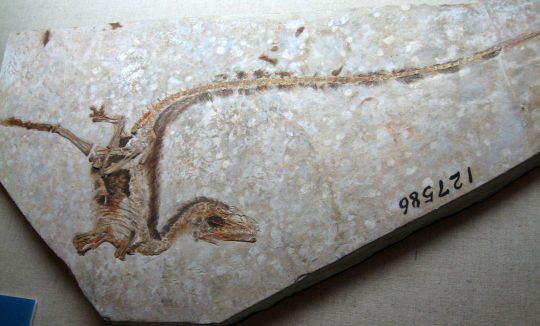
i would've cried too
42 notes
·
View notes
Text
Naashoibitosaurus ostromi
('creek reptile, for John Ostrom')
Saurolophinae Kritosaurini
(Forgive me if my phonetics are wrong here, but I think it's pronounced something like na'ash-o-ee-bee-too-sore-us)
A kritosaurine known from a single pretty scrappy skeleton, with most of the skull (NMMNH P-16106). Naashoibitosaurus is SUCH a kritosaurine (you know how they are), it may actually be a specimen or new species of Kritosaurus.
Kirtland Formation, San Juan Basin, Navajo Nation, New Mexico, USA.
Upper Cretaceous, ~73 Ma.
~
Photo from Wikimedia Commons.


Daily Dino Fact #60
3 notes
·
View notes
Photo
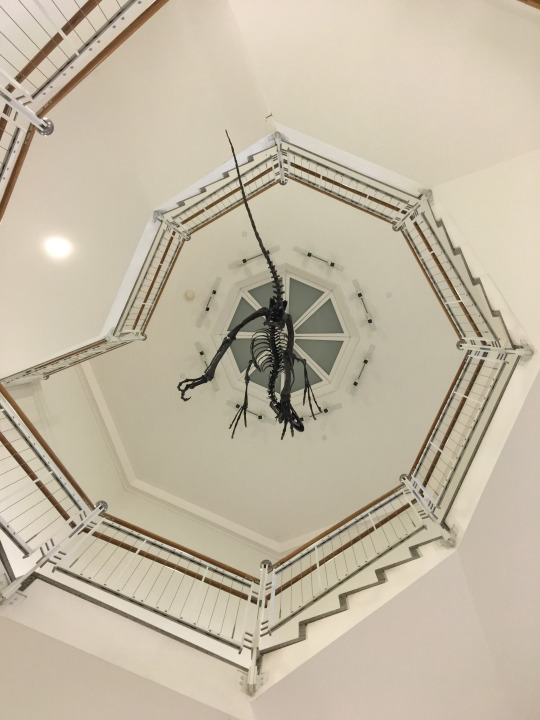
Deinonychus antirrhopus
New Haven, CT.
Suspended above in the foyer of the Yale Museum of Natural History is a skeletal reconstruction of the "raptor" Deinonychus in a leaping attack posture. Yale paleontologist John Ostrom's landmark papers on this lightly built and agile predator inspired a revolution in how we think about extinct dinosaurs and their living descendants, the birds.
The name Deinonychus refers to the sickle-like daw on its foot that, together with its hook-like hand claws and sharp, serrated teeth, would have made for a fearsome predator indeed. Although once thought to have been a cooperative pack hunter, recent work by paleontologists at Yale indicates that it was more likely a solitary predator and cannibal. Deinonychus was the role model for its smaller cousin Velociraptor, the star of the best-selling book and blockbuster film Junasoic Park. Author Michael Crichton and filmmaker Steven Spielberg referred to Ostrom's scientific papers when creating their terrifying "raptors."
Ostrom's 1964 discovery of the fossil specimens on which this cast is based heralded the "Dinosaur Renaissance." Extinct dinosaurs were then commonly thought of as sluggish, scaly, overgrown reptiles similar to living crocodiles. Ostrom's studies led scientists to see that most features of living birds, including a hot-blooded active lifestyle, and even feathers and flight, actually arose much earlier in dinosaur evolution. Ostrom showed that Deinonychus was remarkably similar to another fossil, Archaeopteryx, and thus to living birds, cementing the genealogical connection between what had long been seen as two very different groups of animals. Although Deinonychus was much too heavy and its arms far too short to permit flight, it still had striking modifications to its shoulders, arms, and hands that are important flight-related adaptations in living birds. This enabled scientists to see how the avian flight stroke evolved from the predatory raptorial grasp of extinct dinosaurs like Deinonychus.
Deinonychus antirrhopus means "terrible claw [with the] counter-balancing [tail]". It lived in what is now the western United States between 115 and 108 million years ago, and would have weighted around 150 pounds (almost 70 kg).
1 note
·
View note
Text
Greetings, Scholars!
After our initial introduction, it's time to dive into the heart of our journey - the essential readings. These foundational texts provide a comprehensive exploration of American politics, covering everything from the grassroots to the echelons of power. We'll be going through these readings systematically, discussing their main arguments, implications, and relevance to contemporary political discourse.
Below, I have provided our initial list of essential readings. This list is, by no means, exhaustive. It's a starting point for our exploration, but we're not confined to it. If you have any requests, recommendations, or come across a gem that you believe should be shared, please feel free to suggest. After all, academic pursuit thrives on collaboration and openness to new perspectives.
The list is as follows:
Aldrich, John Why Parties?
Alvarez & Brehm Hard Choices, Easy Answers
Arnold, Douglas The Logic of Congressional Action
Bartels, Larry Unequal Democracy
Baumgartner & Jones The Politics of Attention
Baumgartner & Jones Agendas and Instability in American Politics (latest ed.)
Baumgartner, et al. Lobbying and Policy Change
Bensel, Richard The Political Economy of American Industrialization, 1877-1900
Berry, Jeffrey The New Liberalism
Browning, Rufus, et al. Protest Is Not Enough
Burns, Schlozman & Verba The Private Roots of Public Action
Cameron, Charles Veto Bargaining
Campbell, Louise How Policies Make Citizens
Cohen, et al. The Party Decides
Converse, Philip "The Nature of Belief Systems in Mass Publics," in Apter (Ed.),
Ideology and Discontent
Cox & McCubbins Setting the Agenda
Delli Carpini & Keeter What Americans Know About Politics and Why it Matters
Erikson, MacKuen, & Stimson The Macro Polity
Fiorina, Morris Retrospective Voting in American National Elections
Fiorina, Abrams & Pope Culture War? (3rd ed)
Gilens Affluence and Influence
Green & Shapiro Pathologies of Rational Choice Theory
Green, Palquuist, & Schickler Partisan Hearts and Minds
Hacker, Jacob The Divided Welfare State
Hajnal, Zolton America’s Uneven Democracy
Hansen, John Mark Gaining Access
Harvey, Anna Votes Without Leverage
Hibbing, Smith & Alford Predisposed
Hero, Rodney Latinos and the US Political System.
Iyengar, Shanto Is Anyone Responsible?
Jacobson, Gary The Politics of Congressional Elections
Kernell, Samuel Going Public (latest ed.)
King & Smith Still a House Divided
Kingdon, John Agendas, Alternatives, and Public Policies (latest ed.)
Krehbiel, Keith Pivotal Politics
Mann & Ornstein It's Even Worse Than it Looks
Mayhew, David Electoral Realignments
Mettler, Suzanne Soldiers to Citizens
Milkis & Nelson The American Presidency (latest ed.)
Mutz, Sniderman, Brody Political Persuasion
Neustadt, Richard Presidential Power
Olson, Mancur The Logic of Collective Action
Ostrom, Elinor Governing the Commons
Page & Shapiro The Rational Public
Patashnik, Eric Reforms at Risk
Pierson, Paul Politics in Time
Putnam, Robert Bowling Alone
Rosenstone & Hansen Mobilization, Participation and Democracy in America
Schlozman, Verba & Brady The Unheavenly Chorus
Skocpol, Theda Protecting Soldiers and Mothers
Skorownek, Stephen The Politics Presidents Make
Smith, Steven S. Party Influence in Congress
Stone, Clarence Regime Politics
Stone, Deborah Policy Paradox and Political Reason
Stonecash & Brewer Split: Class and Cultural Divisions in American Politics
Strolovitch, Dara Affirmative Advocacy
Verba, Schlozman & Brady Voice and Equality
Weimer & Vining Policy Analysis (latest ed.)
Wilson, J.Q. Bureaucracy
Zaller, John The Nature and Origins of Mass Opinion
Each reading will have its dedicated blog post, where I'll summarize the key arguments, provide a critical analysis, and relate the text to our broader understanding of American politics. More importantly, I encourage you to share your thoughts, critiques, and insights as well.
The sequence of our reading will not necessarily follow the order in which the books are listed. Depending on our discussions, current political events, or requests, we might jump around the list. Flexibility will keep our exploration fresh and relevant.
So, let's embark on this intellectual adventure! It's time to dig into these fascinating texts and unravel the complex, dynamic world of American politics. Here's to a journey full of discovery, debate, and deep insights!
Happy Reading,
The Capitol Scholar
#american politics#american president#political communication#political science#academia#public policy#public opinion#phd scholar#grad school#Comprehensive Exams
1 note
·
View note
Text

Natasha Prince, Meredith Ostrom, John Newsom
0 notes
Video
vimeo
THE FACTS NOW "Katia's Story" from Magellan Rubin on Vimeo.
Director: Magellan
Executive Producer: Hani Selim
Executive Producer: Rebecca Wray
1st Assistant Director: Brian Bennhoff
2nd Assistant Director: Larry Shure
3rd Assistant Director: Gabby Crohn
Production Supervisor: Chris Sheahan
Location Manager: Juan Ortiz
Cinematographer: Doug Porter
Camera Operator: Ryan Dean
Assistant Camera: Sean Gilbert
DIT: Jason Goodowens
Motion Control Operator: Sean Brown
Motion Control Tech: John Spencer
Gaffer: Rick Kalivoda
Best Boy Electric: Gordy Jordan
Swing Grip: Alan Cowart
Key Grip: John Pivovarnik
Best Boy Grip: Pat Meng
Art Director: Steve Erdberg
Prop Master: Ruston Head
Set Dresser: Coy Hancock
Scenic: Ross Ostrom
Art Assistant: Emily Arthur
Sound Mixer: Mike Harvey
VTR: Isaac John
Script Supervisor: Stephanie Lowell
Wardrobe Stylist: Kristen Bleakley
Hair & Makeup Artist: Tracy Berg
COVID Spray: Joe Ostertag
Medic: Troy West
Craft Service: Jessica Tripod
Motorhome Driver: Alberto Aguiar
Production Assistant: Mike Cranmer
Production Assistant: Jennifer Gold
Production Assistant: Nigel Cassar
Production Assistant: Betsy Bracero
Production Assistant: Zander Pivovarnik
Creative Chairman: Luis Miguel Messianu
Chief Creative Officer: Alvar Sunol
Creative Director: Gabriel Ferrer
Creative Director: Gabriel Reyes
Copywriter: Alejandra Vidal
Art Director: Danae Nunez
Senior Account Director: Elizabeth McCarthy
Account Director: Claudia Rodriguez
Business Manager: Candy Cabrera
Director of Production: Yeyo Marquez
Agency Integrated Producer: Rafael Sanchez
Brand Director: Laura Corbin
Brand Manager: Coadi Burkes
Brand Marketing Specialist: Bianca Bulengo
Editor: Magellan
Colorist: Simon Bourne at Framestore
Color Producer: Chris Anthony at Framestore
VFX Artist: Tyler Tometich
Sound Design: Cesar Haliwa at Chaliwa
Sound Mix: Andy Stremer at Chaliwa
Sound Producer: Veronica Murphy at Chaliwa
0 notes
Text
https://youtu.be/HlKxn5wg_Oo?feature=shared
0 notes
Text
Jurassic Park: esqueleto que inspirou Velociraptor do filme é leiloado
Jurassic Park: esqueleto que inspirou Velociraptor do filme é leiloado
Um esqueleto bem preservado e quase completo de um dinossauro da espécie Deinonychus antirrhopus, apelidado de Hector, foi leiloado pela Christie’s, por US$12,4 milhões (cerca de R$ 63,5 milhões).
Com os primeiros fósseis encontrados em 1964, e formalmente nomeados por John Ostrom em 1969, o Deinonychus é considerado uma das mais importantes descobertas paleontológicas do século XX.
Leia…
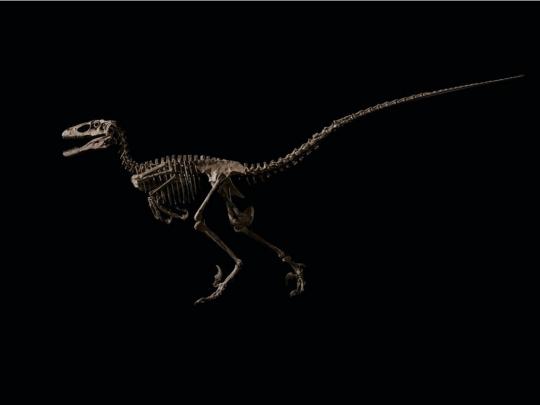
View On WordPress
1 note
·
View note